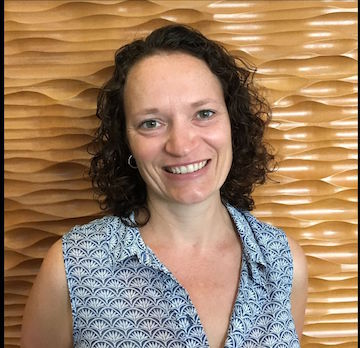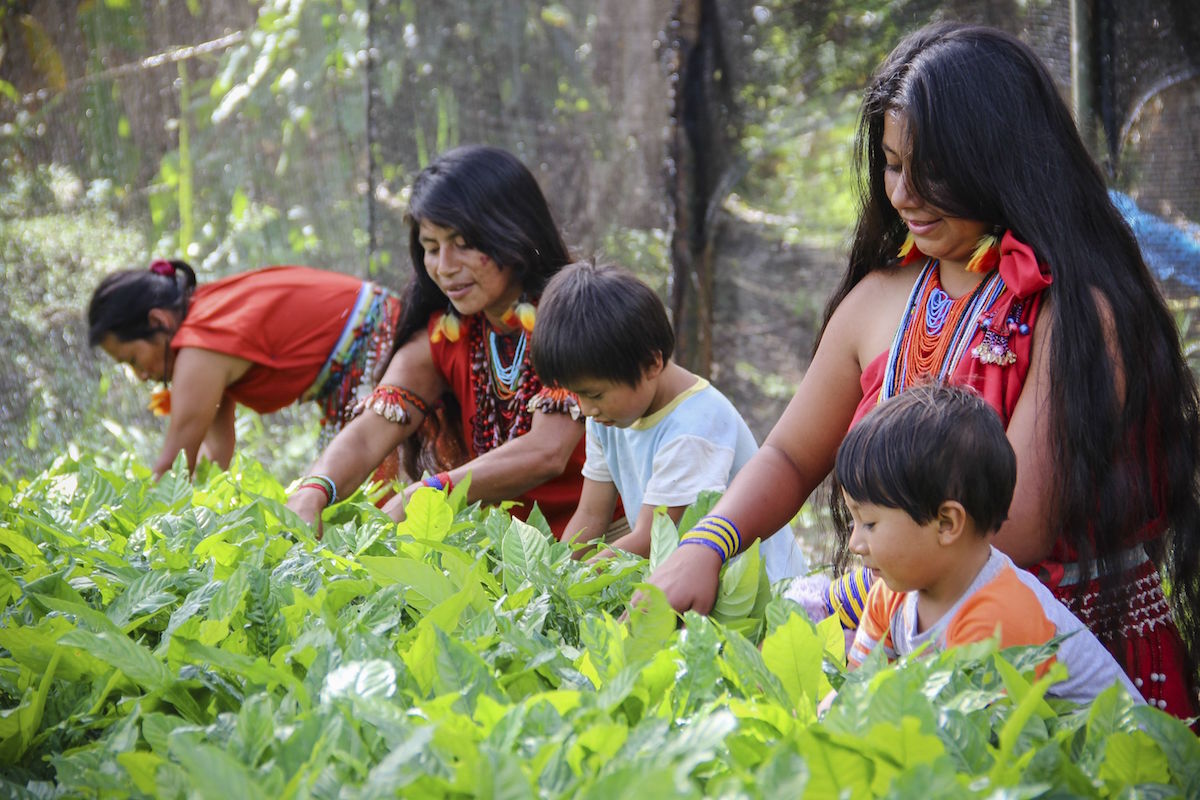- Over recent decades, conservation organizations have started listening to local communities for insight into how best to protect dwindling ecosystems. But only recently have some of them begun tuning in the voices of women, specifically.
- By adopting a “gendered approach” to conservation, some organizations believe they can improve both environmental and social outcomes.
- Kame Westerman, the Gender and Conservation Advisor at the NGO Conservation International, helps her group adopt the gendered approach in its projects.
Over recent decades, conservation organizations have started to tap into the wealth of knowledge and experience held by communities living near conservation targets. Listening to the voices of local people has given these NGOs new insight into how best to protect dwindling ecosystems. However, only more recently have some groups noticed they were hearing only half of the voices.

Women traditionally take a quieter role than men in community discussions in the global south, and their voices had remained unheard. Yet they have a lot to offer to the conservation conversation. Women have distinct roles, knowledge, experiences, and ideas from those of men, and some conservationists began to believe that their exclusion was hampering the success of some initiatives.
By adopting a so-called “gendered approach” to conservation, some organizations believe they are improving both environmental and social outcomes. Tactics include ensuring that women are involved in community discussions and management decisions and creating “women’s projects” that aim to empower women socially through initiatives that also help the environment.
But addressing gender in conservation is a delicate task. Practitioners must consider challenges such as women’s existing workload, men’s perceptions of the approach, and traditional gender roles and expectations.
A leading proponent of this new approach is Kame Westerman. Currently the Gender and Conservation Advisor at the Arlington, Virginia-based NGO Conservation International (CI), Westerman encourages the gendered approach in all of CI’s projects. Mongabay interviewed Westerman by email about the complexities of considering gender in conservation, and the future of the approach.
AN INTERVIEW WITH KAME WESTERMAN
What inspired you to start considering gender in conservation?
I’ve spent a number of years living and working on environmental conservation initiatives in rural communities, mostly in Madagascar — first in forest-dependent communities near the Makira forest [in the country’s northeast] and then in the southwest focused on marine management. In that context, it was apparent that men and women interact with their environment and natural resources differently. They use different resources, they have different priorities for conservation or resource management, and they have different knowledge about the status of environmental resources.
At the same time, though, it also became apparent that when it came to natural resource management and conservation initiatives women were largely absent. For example, with a few exceptions the community-based forest management teams near the Makira forest and the fishery management association in the southwest that I worked with were largely dominated by men.
This became a problem when management decisions were made that impacted women’s lives and livelihoods, without necessarily taking into consideration their needs and interests. I saw this play out in octopus fishery management, where decisions about where and when the fishery should be closed [were] not a fully inclusive process. The result was that women octopus fishers were unable to equitably benefit from that management practice.
Why should organizations consider gender in conservation?
There are two main arguments, or reasons, for considering gender in conservation:
The moral imperative. The conservation movement largely aims to protect nature for the wellbeing of people. Ensuring that the users of natural resources — whether it’s men or women (or boys and girls) — have the right, opportunity, and ability to participate in decision-making and projects affecting those resources is a moral imperative. The ability to participate in decisions that will affect your life and livelihood is a fundamental human right.
For conservation effectiveness. It is fairly well understood within conservation that good stakeholder engagement and community buy-in is critical to effective conservation initiatives. We can think of gender in the same way: understanding who the users are (men, women, boys, girls) and involving them in consultations [and] decision-making and building on their ecological knowledge help contribute to positive conservation outcomes.
Without [that], a project is susceptible to increased unsustainable harvest or management. Just imagine: if a conservation initiative cuts off access to the forest where you collect food for your family (because you were not consulted), you’re likely going to continue entering that forest and collecting what you did before…effectively undermining the intended conservation outcome.

What projects stand out to you as particularly innovative or interesting?
In Cambodia’s Tonle Sap Lake, CI works with Community Fisheries Committees (CFCs) and women’s savings groups. Until recently, there was little overlap of the two groups. The CFCs were largely dominated by men (despite the fact that women were involved in the fishery) while the savings groups were all women. Recognizing the need to bring more women’s voices into fisheries management, CI helped the two groups create a system where a portion of the interest from the savings groups would go to the CFC management budget. These contributions now link the two groups, providing an avenue for women to join CFC meetings, allow men to learn about the activities of the savings groups, and conduct joint activities.
When I worked in southwest Madagascar on local marine conservation, we noticed that primarily men were making decisions about octopus fishery management, which was usually the domain of women. Data showed that this was having a negative impact on women’s catches. We talked with men and women about this phenomenon and they proposed several ideas for how women could be more involved in decision-making and management.
At a national policy level, the work that the IUCN’s Global Gender Office is doing on national Climate Change Gender Action Plans is quite innovative and transformative. In over 20 countries now, they have supported governments to begin fulfilling gender and climate change commitments by bringing together stakeholders and developing specific actions for ensuring gender-responsive climate policy and initiatives.
Some groups create “women’s projects” that aim to empower women through skill building or financial projects intended to achieve environmental outcomes. What do you think about these kinds of projects?
[At CI] we’ve focused, for the most part, on improving how our core conservation projects and programs are designed and implemented; this usually entails looking at the full spectrum of men’s and women’s access, benefit, and ability to participate. Separate women-focused projects certainly have their time and place and there are examples where they have been successful in increasing women’s leadership, access to money and information, and standing within [their] community. But unless those projects are placed within a broader approach to gender equity, they can further perpetuate inequalities.
What kind of evidence is there that this approach actually works for either women or the environment?
Craig Leisher (et al.) recently mapped all of the published literature linking gender to forest and fisheries management. While there is a dearth of published literature looking at this issue (quite a problem in its own right!), the researchers did highlight a number of studies demonstrating an increase in conservation outcomes (mostly forest cover) when decision-making bodies are of mixed gender.
What would you say to conservation supporters who are worried that addressing gender might waste time?
Simply that they are wasting time and money by moving forward with a project without fully understanding and responding to underlying social elements, and it could very well come back to haunt them. Getting the social components of conservation right from the very beginning is critical to long-term success, getting local buy-in, and contributing to human wellbeing.

What are the pitfalls of considering gender in conservation?
Anything that involves people gets complicated quickly. The same is certainly true for the practice of gender integration — while we can make some generalizations, they can be misleading and tricky. I’ll highlight three issues that come up a lot, although there are certainly others:
A frequent challenge … is the belief that gender is too “culturally sensitive,” especially in remote or indigenous communities. I think this sentiment ultimately comes from not fully understanding what is meant by gender, or women’s empowerment, in the context of our conservation work. Gender is often perceived as a western concept, and not something that is okay to talk about with communities, especially indigenous communities. But the fact is, recognizing that men and women interact with their environment differently and using that to inform conservation projects, programs, and policies is good for conservation objectives, good for community wellbeing, and good for men and women.
Gender is often regarded as a “women’s issue,” and it is a struggle to get men to even engage. However, gender in the conservation context requires delving into how both women AND men interact with their resources, and each other, and how that impacts knowledge, use, and priorities for conservation.
Funding and institutional prioritization: doing more extensive community consultations, holding separate meetings, or providing transportation to meetings does cost more money. Unless a donor requires it, gender is often one of the first items to be cut from a budget (and even then it can be a struggle).
In trying to empower women in conservation projects, how do practitioners avoid imposing different cultural values where they are not welcome?
The majority of CI staff around the world comes from the countries and communities where we work. That means that they understand the cultural norms and nuances associated with gender in that context, and can more easily navigate what is appropriate and what is not… There needs to be a dialogue with women and men within the community to develop processes and opportunities for engagement that they feel comfortable with.

How long has gender been a part of conservation initiatives?
The development community is leaps and bounds ahead of where conservation is. The fact that we’re still questioning it as a necessity (and that I have to defend it) shows how far behind we are. There have been advocates for gender in conservation for a couple decades, but it’s only been relatively recently that we’ve seen much traction.
This is, for better or for worse, largely driven by donors who are asking for more and more rigorous gender components. This is particularly noticeable in public funding such as the Global Environment Facility, the Green Climate Fund, USAID, AusAid, and most European governments. We also see much stronger language in international agreements (such as the Paris Agreement which calls for the empowerment of women and girls when addressing climate change), and within efforts of the three Rio Conventions — the UN Framework Convention on Climate Change, the UN Convention on Biological Diversity, and the UN Convention to Combat Desertification.
How long until it becomes common to include a gender dimension in conservation projects?
Until or unless conservation practice really internalizes people as a central element of effective conservation, I’m honestly not sure that gender considerations will become truly embedded.
Why do you think conservation practice hasn’t internalized people as a central element of effective conservation?
I think part of the problem (at least from the gender perspective) is that conservationists are often not taught about it in school. I have both a conservation bio undergrad and graduate degree, and to the best of my memory the gendered dimensions of conservation [were] never discussed. If we don’t teach it as a fundamental element in effective conservation at that level, then why would we expect conservation practitioners to have those skills?
Editor’s note: this interview has been edited for length and clarity.
Roz Evans is a science journalist based in Exeter, England. Follow her on Twitter at @rozevans89.
Citations
Leisher C. et al. (2016). Does the gender composition of forest and fishery management groups affect resource governance and conservation outcomes? A systematic map. Environmental Evidence, 5:6.














